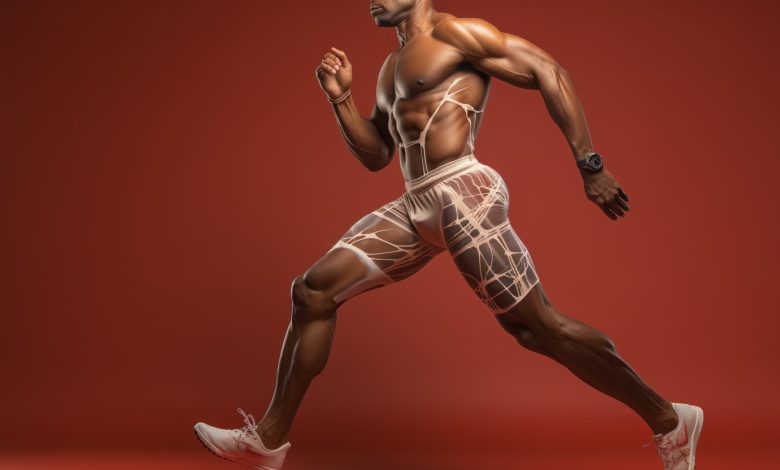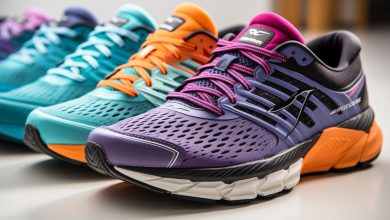How to Improve Your Running Form for Better Efficiency

Imagine yourself effortlessly gliding through the streets, each step propelling you forward with maximum efficiency. Want to achieve that perfect running form? Look no further!
In this article, we will show you how to assess your current form and make necessary corrections for improved posture and alignment. Strengthen key muscles to enhance your stability and increase cadence for greater speed.
Fine-tune your technique through drills and exercises. Get ready to transform your running game and unlock your true potential!
Key Takeaways
– Assess and adjust running form by evaluating stride length and foot strike pattern
– Correct posture and alignment by maintaining a straight back, engaging core muscles, and performing alignment exercises
– Strengthen key muscles, including the core, abdominals, obliques, lower back, hip flexors, and glutes
– Increase cadence for greater efficiency by reducing ground contact time, improving stride turnover, and practicing rhythmic breathing patterns
Assessing Your Current Running Form

First, take a moment to assess your current running form and identify any areas that could use improvement. Correcting stride length and analyzing your foot strike pattern are two crucial aspects of improving your running efficiency.
Stride length refers to the distance covered by each step you take while running. It is important to find a balance between overstriding and understriding. Overstriding can lead to inefficient movement and increased risk of injury, while understriding can limit your speed potential.
Analyzing your foot strike pattern involves observing how your feet make contact with the ground during each stride. Ideally, you want a midfoot or forefoot strike rather than a heavy heel strike that can cause excessive impact on joints.
By assessing these areas, you can begin making necessary adjustments to improve your overall running form.
Now that you have evaluated and identified areas for improvement in your running form, it’s time to move on to correcting posture and alignment for better efficiency.
Correcting Posture and Alignment

To correct your posture and alignment, make sure you maintain a straight back while running. This is crucial for preventing injuries and maximizing your running efficiency.
Here are some valuable tips to help you improve your posture and alignment:
– Engage your core muscles: A strong core provides stability and helps maintain proper alignment throughout your run.
– Perform alignment exercises: Incorporate exercises like planks, bridges, and bird dogs into your routine to strengthen the muscles that support good posture.
– Focus on body awareness: Be conscious of how you hold yourself while running. Imagine a string pulling the top of your head upward, elongating your spine.
By incorporating these practices into your training regimen, you will develop better postural habits and significantly enhance your running form.
Strengthening Key Muscles for Improved Form

Focus on engaging your core muscles and strengthening key muscle groups to enhance your running posture and alignment. Injury prevention is crucial for runners, and one way to minimize the risk of injuries is by building core stability.
Your core muscles, including the abdominals, obliques, and lower back, provide support to your spine and pelvis while you run. Strengthening these muscles will help maintain a stable torso, reducing excessive movement that can lead to strain or injury.
Additionally, strong hip flexors and glutes are essential for proper running form. These muscles propel you forward with each stride and contribute to overall power and efficiency. Incorporate exercises like planks, bridges, lunges, and squats into your training routine to target these key muscle groups.
Increasing Cadence for Greater Efficiency

Increasing your cadence can lead to more efficient running by reducing ground contact time and improving stride turnover. By focusing on increasing your steps per minute, you can optimize your running form and enhance your overall performance.
Here are some key techniques to help you achieve a higher cadence:
– Breathing techniques for optimal running efficiency: Proper breathing can improve oxygen intake, allowing your body to function more efficiently during runs. Practice rhythmic breathing patterns, such as inhaling for two steps and exhaling for two steps.
– Using visual cues to maintain a consistent cadence: Find an object in the distance, like a tree or lamppost, and synchronize your foot strikes with it. This helps maintain a steady rhythm and prevents you from slowing down unintentionally.
– Gradually increase cadence: Start by adding just five percent more steps per minute each week until you reach your desired stride rate. This gradual approach allows your body to adapt without risking injury.
Fine-Tuning Technique Through Drills and Exercises

Try incorporating drills and exercises into your training routine to fine-tune your technique and optimize your performance.
When it comes to running, proper footwear is crucial for optimal performance. Make sure you have the right shoes that provide adequate support and cushioning for your feet. This will help prevent injuries and improve overall efficiency.
In addition to footwear, breathing techniques play a vital role in endurance and efficiency. Proper breathing helps deliver oxygen to your muscles more efficiently, allowing you to run longer without feeling fatigued. Practice deep belly breathing during your runs by inhaling deeply through your nose and exhaling fully through your mouth.
To further refine your technique, incorporate specific drills and exercises into your training regimen. Focus on strengthening core muscles, improving flexibility, and enhancing balance. Examples include lunges, squats, planks, single-leg hops, and skipping drills.
Conclusion
In conclusion, by assessing your current running form and making corrections to your posture and alignment, you can greatly improve your efficiency. Strengthening key muscles, such as the core and glutes, will also contribute to better form and reduce the risk of injury.
Increasing your cadence will help you run more efficiently and with less impact on your joints. Finally, fine-tuning your technique through drills and exercises will further enhance your overall running performance.
So lace up those shoes, envision the smooth strides ahead, and watch as your running form takes flight!






